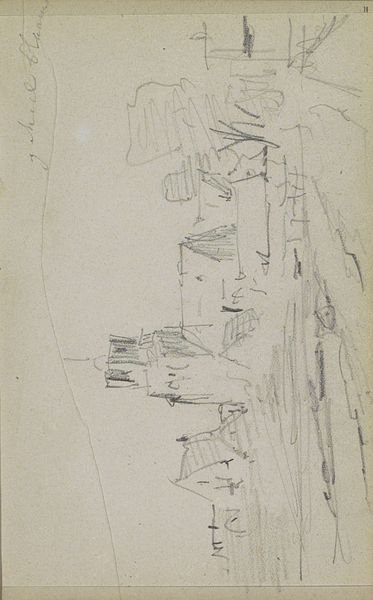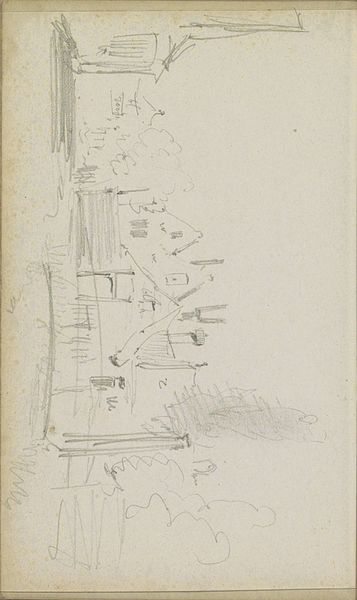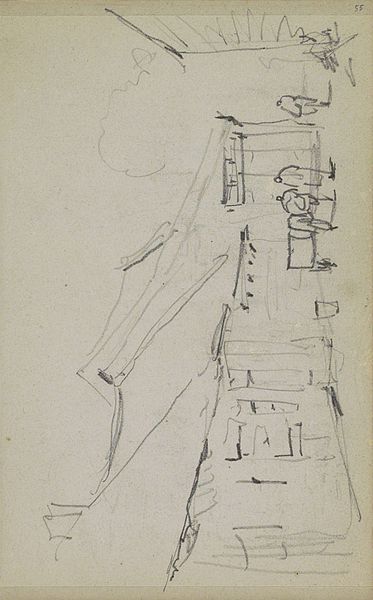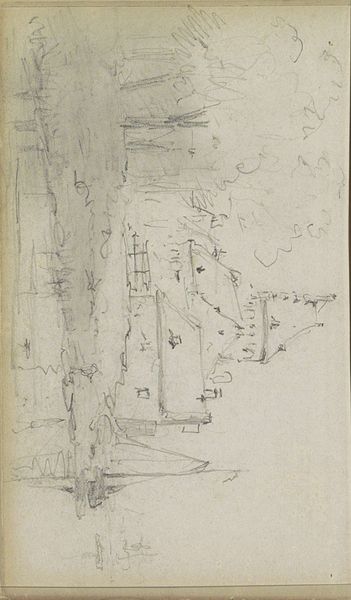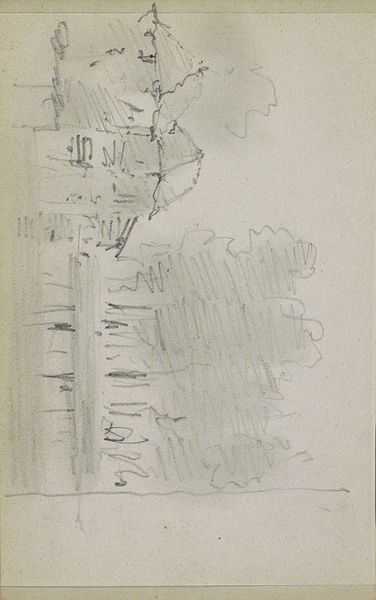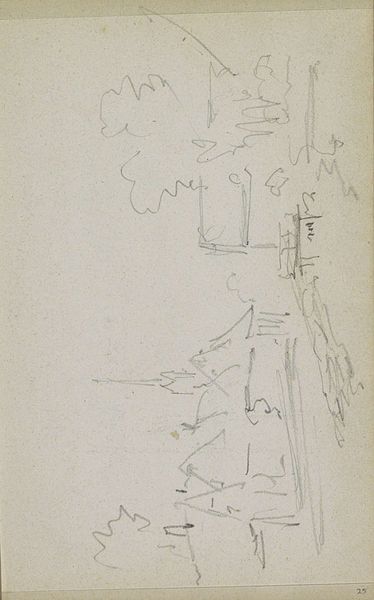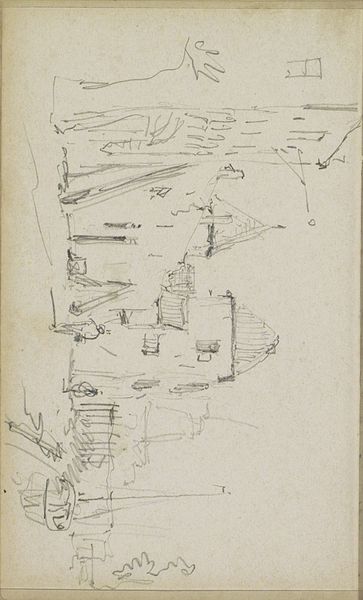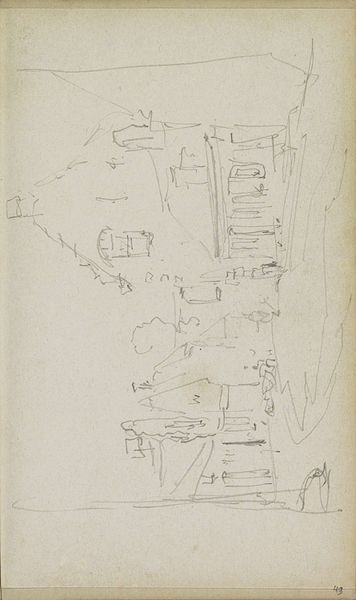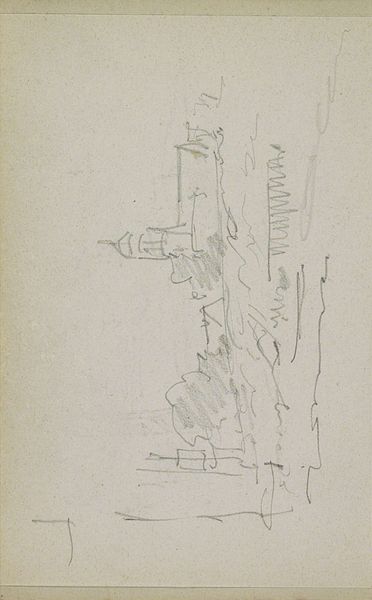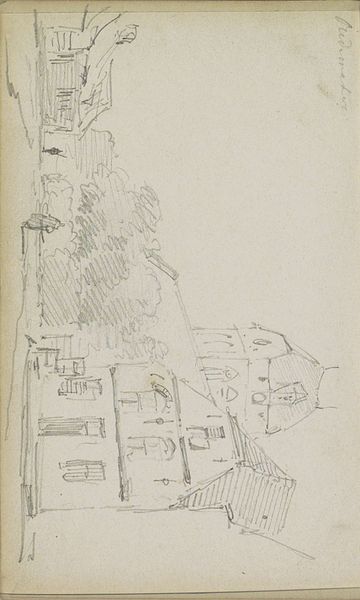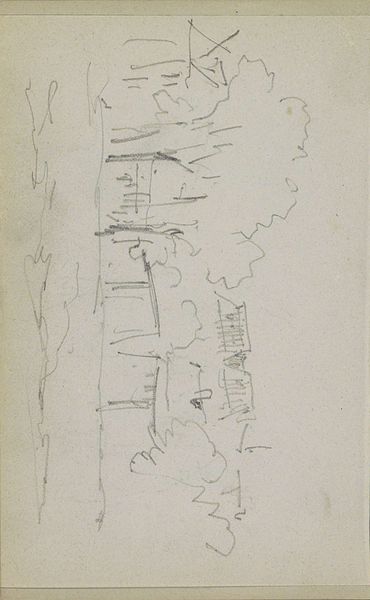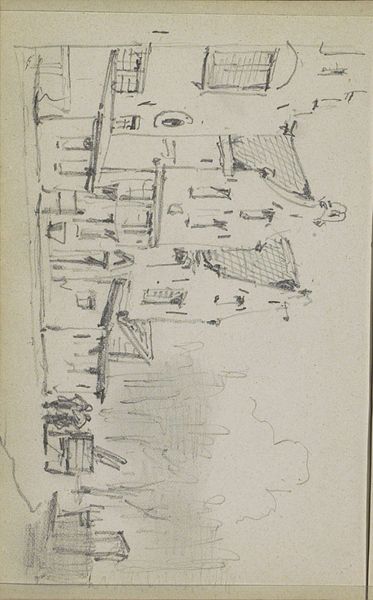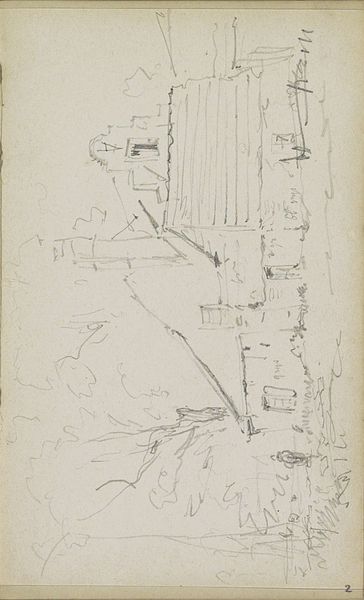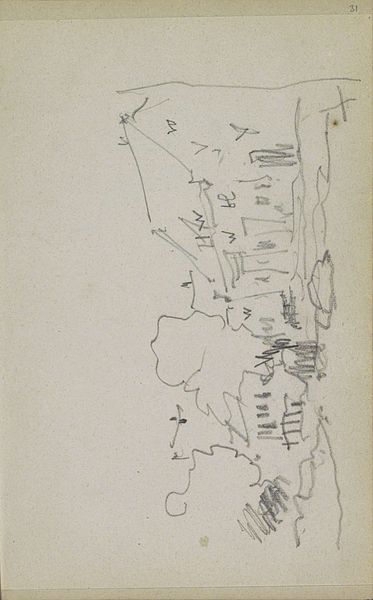
drawing, pencil
#
architectural sketch
#
drawing
#
sketch book
#
landscape
#
personal sketchbook
#
idea generation sketch
#
sketchwork
#
detailed observational sketch
#
pencil
#
sketchbook drawing
#
cityscape
#
storyboard and sketchbook work
#
sketchbook art
#
realism
#
initial sketch
Copyright: Rijks Museum: Open Domain
Curator: This pencil sketch, attributed to Adrianus Eversen and tentatively titled "Stadsgezicht met een kerk", or "Cityscape with a Church," gives us a glimpse into the artist's process. It was likely created sometime between 1828 and 1897. Editor: My first impression is a feeling of ethereality. The lines are so delicate, almost like a fading memory of a place. I sense a gentle stillness. Curator: The lightness you're perceiving definitely speaks to its function as a preliminary drawing. Look closely at the different densities of mark-making; it appears Eversen experimented with different levels of detail. See how some buildings are merely suggested, while others have more defined features? Editor: Yes, I see that now. The church steeple is perhaps the most rendered, acting almost as a focal point within this somewhat chaotic web of lines. The church clearly takes on importance here; the drawing directs my eyes toward its image again and again. Do we know what this church represents culturally for the city portrayed in this image? Curator: Without knowing the specific location, it's hard to say definitively, but churches in Dutch cityscapes often symbolized community stability, spiritual grounding and the ever present reach of social life. Churches frequently act to orient maps of cities in relation to the holy. Given Eversen's interest in genre scenes depicting everyday life, perhaps the church served as a backdrop against which ordinary human dramas unfold. We see some lines down below, maybe the marks indicate that those spaces hold lower working classes while the steeple is oriented upward, for the rich, with the implied promise of heaven. Editor: An intriguing proposal. Beyond the possible socioeconomic relationships displayed in the artwork, to me, there's a melancholy associated with the sketch. A yearning, maybe, connected to the symbolic power of religious institutions at that time. Curator: Considering the likely period of creation, that sense of melancholy might be tied to changing urban landscapes as a result of the rise of industrial manufacturing. It is fascinating to think that these kinds of architectural sketches, by documenting buildings for posterity, help us imagine how past viewers of these sketches longed to fix fleeting social and material conditions in their artwork. Editor: This quick sketch holds such resonance—the fleeting moment captured reveals enduring connections to symbolism, memory, and the way buildings were conceived and produced for the spaces in which humans build societies and spiritual practices. Thank you for shining light on that cultural web!
Comments
No comments
Be the first to comment and join the conversation on the ultimate creative platform.
